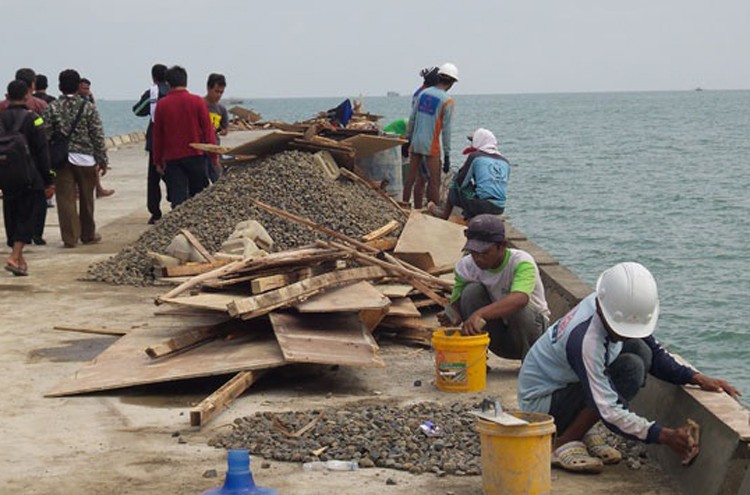Infrastructure Development and Community Services: A Foundation for Sustainable Development

Photo Credit : Nanang Sutisna
Infrastructure development and community services have become two primary activities underpinning efforts to improve the quality of life in society as part of achieving sustainable development goals. Infrastructure is a form of public capital used as an investment by the government to meet the needs and serve the interests of its citizens. This includes both physical foundations for economic and social activities and non-physical facilities such as services that provide social and institutional support to strengthen community capacity. Integrating both can promote well-being, equitable development, and community resilience in the face of change and crisis (World Bank, 2020).
The Role of Infrastructure in Development
Public infrastructure encompasses various sectors. In Indonesia, infrastructure can be identified or categorized into several fields such as water management, transportation, energy, telecommunications, clean water, digital technology, energy resources, waste/sanitation management, and others. In the transportation sector, such as road construction, Calderón & Servén (2010) assert that it can effectively promote economic growth by increasing connectivity, logistical efficiency, and reducing transaction costs. Good road access enables remote areas to connect with various business sectors such as markets, healthcare services, and education, which in turn spurs growth and promotes equitable development.
Digital and energy infrastructure are becoming increasingly important in the era of Industry 4.0. Reliable internet access opens up opportunities in the digital economy, online education, and innovations in public services (OECD, 2022). However, in Indonesia, many underdeveloped regions still do not benefit from such infrastructure, creating a digital divide that exacerbates social inequality. Digital infrastructure should ideally serve as a key foundation for the development of community media to voice their interests. Yet in many rural areas, community media face significant challenges such as limited internet access, poor network quality that hampers information distribution, lack of production tools, and insufficient technical training to use digital technology.
To address these issues, we can look at the work of Combine Resource Institution (CRI), which has helped establish many digital-based community media outlets in Yogyakarta, Kalimantan, and Nusa Tenggara. To overcome digital infrastructure challenges, CRI advocates and assists communities in managing community radio through streaming broadcasts, developing local news websites, and using social media to spread information. Similar initiatives have also been undertaken by Dapur Remaja community in Depok and the Maja Arts and Culture Community in Ujungberung.
Community Services as a Strategy to Strengthen Social Capacity
Community services should aim to improve the well-being of their members. These services can cover various aspects such as health, education, social protection, economic empowerment, skills development, and more. These efforts play a crucial role in building the social capital of a community, strengthening internal solidarity, and enhancing social resilience (Putnam, 2000). In Indonesia, this can be seen in programs such as integrated health service posts (posyandu) or early childhood education (PAUD), which not only provide services but also serve as a platform for social interaction among residents.
Community services must ensure inclusivity, affordability, and quality to effectively impact human development achievements, particularly in terms of the Human Development Index (HDI), which includes health, education, and a decent standard of living (UNDP, 2023). In the context of community media, we can see the non-physical benefits of digital infrastructure through citizen journalism training and digital content management. This improves members’ skills in producing, managing, and disseminating locally relevant information that can reach a global audience (CRI, 2021).
From this, we can see clear evidence that infrastructure significantly helps communities expand their interaction reach and build cross-community collaboration with stakeholders beyond their region, at low and effective distribution costs.
In development practice, infrastructure and social services should ideally not be separated. For example, a job skills training program will be more effective if supported by transportation and related business activities (Hine & Rizet, 1995). A school will also be more beneficial if accompanied by adequate sanitation and hygiene facilities.
Conclusion
From the above discussion, it can be briefly concluded that infrastructure development and community services play a vital role as a foundation for sustainable community life. These two elements are interdependent and mutually reinforcing, particularly in facilitating mobility and economic activity, and in meeting basic needs and social welfare. This development must be built on a shared commitment among the government, the community, and the private sector, so that development can serve as an instrument that humanizes and empowers.
-Diana Anggraeni
References
Calderón, C., & Servén, L. (2010). Infrastructure and economic development in Sub-Saharan Africa. Journal of African Economies, 19(suppl_1), i13–i87.
Hine, J., & Rizet, C. (1995). Urban transport and mobility: The challenge of poverty and access. World Bank.
Kemendesa PDTT. (2021). Laporan Tahunan Program Desa Mandiri. Kementerian Desa, Pembangunan Daerah Tertinggal, dan Transmigrasi.
OECD. (2022). Going Digital: Shaping Policies, Improving Lives. OECD Publishing.
Putnam, R. D. (2000). Bowling Alone: The Collapse and Revival of American Community. Simon and Schuster.
UNDP. (2023). Human Development Report 2023/2024. United Nations Development Programme.
UN-Habitat. (2020). World Cities Report: The Value of Sustainable Urbanization.
World Bank. (2020). Infrastructure for development. World Bank Group.

